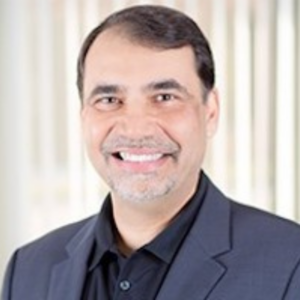The Risks That Come with Outdated Technology in the Senior Care Industry
Technology plays a central role in senior care operations. It facilitates caregiving and communication, improves accuracy and recordkeeping, and improves quality of care. While technology is a valuable and powerful tool, security is a paramount concern. When technology becomes outdated, senior care communities face unique security vulnerabilities that could have significant consequences.
Common Outdated Technology and Its Risks

Don Jensen, vice president of multi-family and senior housing at Allbridge
Outdated technology is common in senior living communities, though the type of technology often depends on when the community was built. “Many still rely on analog or legacy TV systems, copper-based cabling, outdated Wi-Fi infrastructure, standalone nurse call systems, and older access control technologies,” says Don Jensen, vice president of multi-family and senior housing at Allbridge.
Communities lacking integrated medical monitoring, security, and environmental control systems may face significant inefficiencies and heightened security risks. “Even basic infrastructure like switches and routers are sometimes far past their recommended lifecycle and could fail,” Jensen explains.
Outdated technology can be an inconvenience or a serious safety issue. According to Jensen, there are physical and technological risks of using older technologies and systems, including:
- Security vulnerabilities, where outdated systems lack necessary encryption or firmware updates and can leave networks open to cyber threats.
- Operational downtime in which systems can fail due to their age, causing communication breakdowns.
- Resident satisfaction impacting resident satisfaction scores due to poor connectivity, slow networks, or outdated entertainment systems.
- Regulatory compliance risks of some healthcare systems don’t meet current HIPAA or other safety standards.
“Each type of technology brings its own risk profile, whether it’s performance, compatibility, or security,” Jensen says. A doorbell that doesn’t work might be an annoyance, while an access pad on the fritz could lead to unwelcome visitors being able to access the property. Outdated Wi-Fi routers often have security flaws that make them easier to hack, potentially exposing sensitive information such as passwords and banking credentials.
Security Concerns with Personal Devices
Residents typically rely on multiple devices — including phones, tablets, and computers — and staff often use personal devices during breaks. According to Jensen, these unmanaged devices can pose serious security risks. “Anything that is connected to a network should be considered at risk, because vulnerabilities can crop up at any point along a system,” he explains. He recommends that residents enable security features, like two factor authentication. Devices connected to the Wi-Fi network should be up-to-date with the latest firmware and encryption.
“This is where monitoring and updating are critical,” Jensen explains. “For instance, properties using Wi-Fi 6 will have WPA3 encryption, while the latest version, Wi-Fi 7, uses WPA4 and enhanced encryption for data. WPA3 encryption didn’t just stop working one day, but the longer something is available to the public, the longer that bad actors have time to study it and find weaknesses that can be exploited,” he says. As a result, technology is upgraded every two to three years to ensure protection, and communities may need to take an active role in verifying that resident devices are up to date.
How Senior Care Communities Can Avoid Outdated Technology
Jensen recommends that senior care communities conduct a health check focused on their entire technology platform. “This means working with a trusted partner to assess any current needs, and then scheduling annual audits to check for any failures or issues,” he says. “It will also be important to monitor vendor lifecycle alerts for firmware and hardware end-of-life notifications. Communities can use proactive management platforms that can monitor performance across your system to detect risks early for much of this.”
He also recommends communities listen to their residents for complaint trends. They may identify issues occurring with specific devices or technology offerings.
Even when working on a limited budget, communities can avoid using outdated technology. They should first start with an assessment to identify the most at-risk areas and prioritize the issues that need to be addressed.
Jensen recommends that communities work with a single technology partner to ensure they get exactly the technology they need and nothing more. “Many operators will select a sales bundle with a local provider because of the simplicity, but many times you’re getting more than you need at a higher price,” he says.
To offset monthly expenses, communities can use a managed Wi-Fi and bulk resale program to create revenue and net operating income opportunities. Additionally, some vendors may offer trade-in programs for older technology, or they may offer refurbished hardware for sale.
Security Best Practices for Senior Care Communities
In addition to keeping technology updated, Jensen recommends the following security best practices:
- Network segmentation: Ensure staff, operations, and residents all work off of separate networks so that an issue or security breach in one network doesn’t affect the entire community.
- Personal area networks: The use of personal area networks (PAN) will make sure each resident has their own secure network.
- Personal security protocols: Have strong password protocols and multi-factor authentication requirements in place for staff systems.
- Additional protections: Work with your partner to ensure you have proper firewalls, intrusion protection, and endpoint protection across connected devices.
- Staff and resident awareness: Conduct ongoing training for staff on phishing and cyber hygiene, and make residents aware of best practices.
- Be ready to react: Make sure you have 24/7 support for staff and residents in place to quickly address any issues before they escalate.
The Real Value of Updated Technology
There are many reasons why keeping technology updated should be a priority for senior care communities. “Outdated technology isn’t just about poor performance. It’s about risk exposure, resident satisfaction, operational efficiencies, and missed opportunities,” says Jensen. A quality partner can help communities create secure and resident-focused solutions, even when they’re working on a limited budget. “A trusted technology partner will be able to guide communities to integrated solutions, proactive support, and simplified processes to allow them to focus on residents.”

Paige Cerulli is a contributing writer to i Advance Senior Care.
Related Articles
Topics: Facility management , Featured Articles , General Technology , Information Technology , Operations , Risk Management











